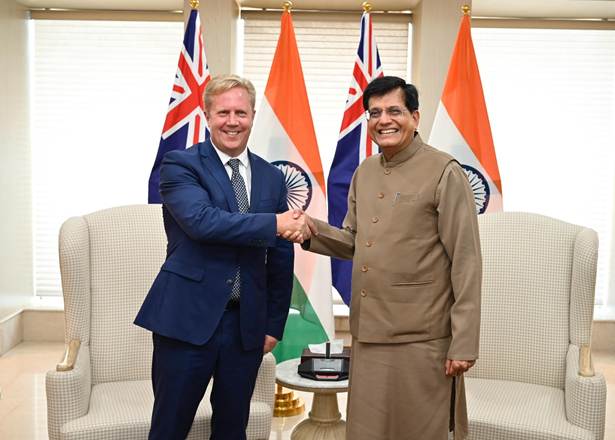
A New Chapter in Bilateral Trade
In a landmark trade development, India and New Zealand have relaunched their Free Trade Agreement (FTA) talks after a 10-year hiatus. The announcement was made following a meeting between New Zealand’s Trade Minister Todd McClay and India’s Commerce Minister Piyush Goyal in New Delhi. The renewed negotiations aim to expand bilateral trade by reducing tariffs, enhancing market access, and addressing trade barriers.
Significance of the FTA Revival
The decision to resume FTA talks is part of India’s broader trade strategy. With ongoing negotiations with the US, the European Union, and Australia, India seeks to strengthen its position in global trade. For New Zealand, the FTA offers a gateway to tap into India’s vast and growing consumer market.
Currently, India-New Zealand bilateral trade stands at approximately $2.3 billion. The FTA is expected to significantly boost trade volumes by streamlining regulations and removing trade restrictions.
Key Sectors Under Negotiation
- Agriculture and Dairy: New Zealand aims to increase exports of its dairy products, including milk powder, cheese, and butter, by reducing Indian tariffs. However, India’s dairy industry is concerned about competition from New Zealand’s large-scale, low-cost producers.
- Technology and Services: India is seeking greater market access for its IT, pharmaceutical, and service sectors, aiming to enhance its export footprint in New Zealand.
- Tariff and Non-Tariff Barriers: Both countries are exploring ways to reduce tariffs and simplify customs procedures to facilitate smoother trade.
Potential Benefits of the FTA
- Enhanced Bilateral Trade: The FTA could significantly boost trade volumes, benefiting key sectors such as agriculture, technology, and services.
- Wider Market Access: Indian exporters could gain greater access to New Zealand’s market, while New Zealand companies could benefit from India’s growing middle class.
- Lower Consumer Prices: Reduced tariffs on New Zealand dairy products could make them more affordable for Indian consumers.
Challenges and Concerns
Despite the optimism, several hurdles could slow down the FTA’s progress:
- Protectionist Policies: India’s dairy industry fears being outcompeted by New Zealand’s cost-efficient products.
- Regulatory Complexities: Differences in regulatory standards and compliance requirements could delay the final agreement.
- Tariff Disputes: Striking a balance on tariff reductions remains a key challenge for both nations.
Geopolitical and Economic Impact
The revived FTA talks come at a time when India faces growing US pressure to open its agricultural and dairy sectors. A successful FTA with New Zealand could influence India’s ongoing trade negotiations with other major economies. Moreover, the agreement could strengthen India’s presence in the Indo-Pacific trade bloc.
The relaunch of India-New Zealand FTA negotiations marks a significant step in strengthening bilateral trade relations. While the agreement offers immense economic potential, addressing sensitive issues such as agricultural tariffs and regulatory differences will be crucial. If successful, the FTA could unlock new trade opportunities and enhance economic cooperation between the two nations.